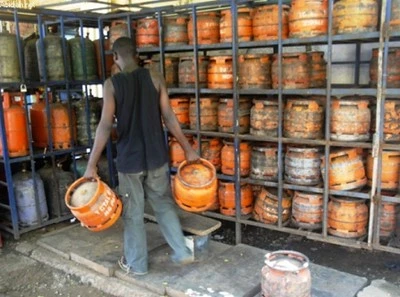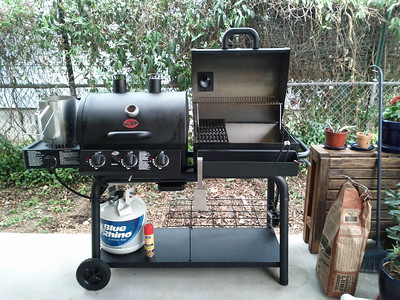
Determining how much butane is left in a bottle can be challenging, especially if the container is not transparent or doesn’t have a gauge. Here are some ways you could try to figure out how much butane is left:
Method 1: Weight Method
- Tare Weight: Check the tare weight of the empty canister, which is usually printed on the bottom or side of the bottle. The tare weight is the weight of the empty bottle.
- Weigh the Bottle: Use a kitchen scale to weigh the current bottle.
- Calculate: Subtract the tare weight from the current weight to find out how much butane is left.
Method 2: Float Test (for Cylindrical Bottles)
- Fill a Bucket: Fill a bucket or sink with water.
- Float the Bottle: Gently place the bottle in the water.
- Observe: If the bottle floats high, it’s mostly empty. If it sinks or sits low in the water, it’s mostly full.
Note: This method is not highly accurate and is more of a rough estimation.
Method 3: Shake and Swish
- Shake the Bottle: Carefully shake the bottle and feel for the liquid butane inside.
- Listen and Feel: You might be able to estimate how full the bottle is based on how much liquid you can hear or feel moving inside.
Note: This is a very rough estimate and is generally not recommended for accuracy.
Method 4: Professional Gauge
- Some butane bottles are designed with a built-in gauge that indicates how much butane is left. If your bottle has such a feature, simply check the gauge for a fairly accurate measurement.
Method 5: Temperature Test
- Spray Water: Spray some water on the side of the butane bottle.
- Observe: The area of the bottle containing butane will evaporate the water more slowly than the empty part.
Note: Be very cautious with this method. Avoid spraying water near any open flame or source of ignition.
Warning:
Handling flammable gases like butane can be dangerous. Always follow safety guidelines and recommendations provided by the manufacturer. When in doubt, consult professionals for assistance.
If you’re dealing with larger propane tanks, many of these methods are not appropriate or safe, and you should consult the supplier or manufacturer for guidance.
Read also: Is Mixing Butane with Other Fuels Safe?
You Can use Magnetic gas level indicators
Magnetic gas level indicators are devices used to gauge the amount of gas remaining in a bottle or tank. These indicators typically use magnetism to adhere to the side of the bottle, and they work based on the principle that the liquid gas inside the bottle has different thermal properties than the gas vapor or empty space.
How Indicators Work
The magnetic gas level indicator usually consists of a magnetic strip that you attach to the side of the bottle. As the gas in the bottle is used, the temperature difference between the empty portion and the portion filled with liquid gas becomes evident. The indicator, often featuring a color-changing strip or gauge, reacts to this temperature difference, allowing you to see approximately how much gas remains in the bottle.
Pros and Cons
Pros
- Ease of Use: These indicators are generally easy to attach and read.
- Non-Invasive: Since they adhere to the outside, there’s no risk of contaminating the gas.
- Reusable: In many cases, these magnetic indicators can be removed and used on another bottle.
- Quick Estimate: Provides a fast way to check gas levels without needing scales or other equipment.
Cons
- Accuracy: They are generally less accurate than other methods, like weighing the bottle.
- Temperature-Dependent: Their accuracy can be affected by the external temperature, which might skew the readings.
- Not Universal: May not work effectively on all types of bottles or for all types of gas.
Safety Precautions
Always ensure that the use of a magnetic gas level indicator is compatible with your specific type of gas bottle and that you follow any safety guidelines provided by the manufacturer.
Magnetic gas level indicators offer a quick and convenient way to estimate how much gas is left in a bottle, but they may lack the accuracy of other methods. Always consider using them in conjunction with other methods for best results.
Read also: Where Should You Store Butane Canisters at Home?
Importance of Knowing Butane Levels
Knowing the amount of butane left in a bottle or canister is crucial for several reasons, ranging from safety concerns to practical utility. Below are some key reasons why keeping track of your butane levels is essential:
Safety Precautions
- Avoiding Overuse – Using a nearly empty butane canister can sometimes lead to erratic flame behavior or sputtering, which can be dangerous if you’re relying on a consistent source of heat or flame.
- Monitoring for Leaks – Knowing how much butane should be in the bottle can also help you monitor for potential leaks, which are not only wasteful but also present a safety hazard.
- Handling and Storage – Being aware of the butane level is crucial for safe handling and storage. A full bottle has a different risk profile than an empty one, and knowing how full your bottle is can help you take appropriate safety precautions.
Convenience and Preparedness
- Avoid Running Out – Whether you’re using a portable stove while camping, a butane torch for culinary purposes, or a lighter for various tasks, running out of butane at a crucial moment can be extremely inconvenient.
- Planning and Replenishing – Knowing how much butane is left allows you to plan ahead. For instance, you can decide whether to purchase a new bottle before your camping trip or cooking session.
- Efficient Use – When you know how much butane is remaining, you can use it more efficiently. You can decide, for instance, whether there is enough to last through a power outage or if you’ll need to resort to an alternative fuel source.
Cost-Effectiveness
- Budget Management – Constantly buying new bottles because you’re unsure of how much is left in your current ones is wasteful. Monitoring butane levels can help you use the fuel more efficiently, ultimately saving money.
- Reducing Waste – By efficiently using the butane you have, you also contribute to reducing waste, as you’ll fully use each canister before disposing of it.
Compliance With Regulations
In some jurisdictions, there are regulations about the transport and storage of flammable gases, including butane. Knowing the quantity you have on hand could be essential for legal reasons.
In summary, knowing how much butane is left in a bottle is important for safety, convenience, cost-effectiveness, and even legal compliance. Being informed enables you to make smart decisions, whether it’s taking necessary safety precautions or planning to buy a new bottle.
Conclusion
Knowing how much butane is left in a bottle is crucial for both safety and convenience. From weighing the bottle to simpler methods like the float test or shake and swish, each approach has its pros and cons. Accurate measurement helps you avoid the inconvenience of running out when you need it most, minimizes waste, and enhances safety by preventing potential hazards. Armed with these methods, you can be better prepared and more responsible in your use of butane.

Jeremy is a highly experienced professional propane technician with over 21 years of experience in the industry. Throughout his career, he has gained extensive knowledge and expertise in propane gas installation, maintenance, and repair, as well as in ensuring safety and compliance with industry standards. Mike has worked with various residential, commercial, and industrial clients, providing top-notch services and solutions to meet their propane needs. He is dedicated to his craft and passionate about delivering exceptional service to his clients.




